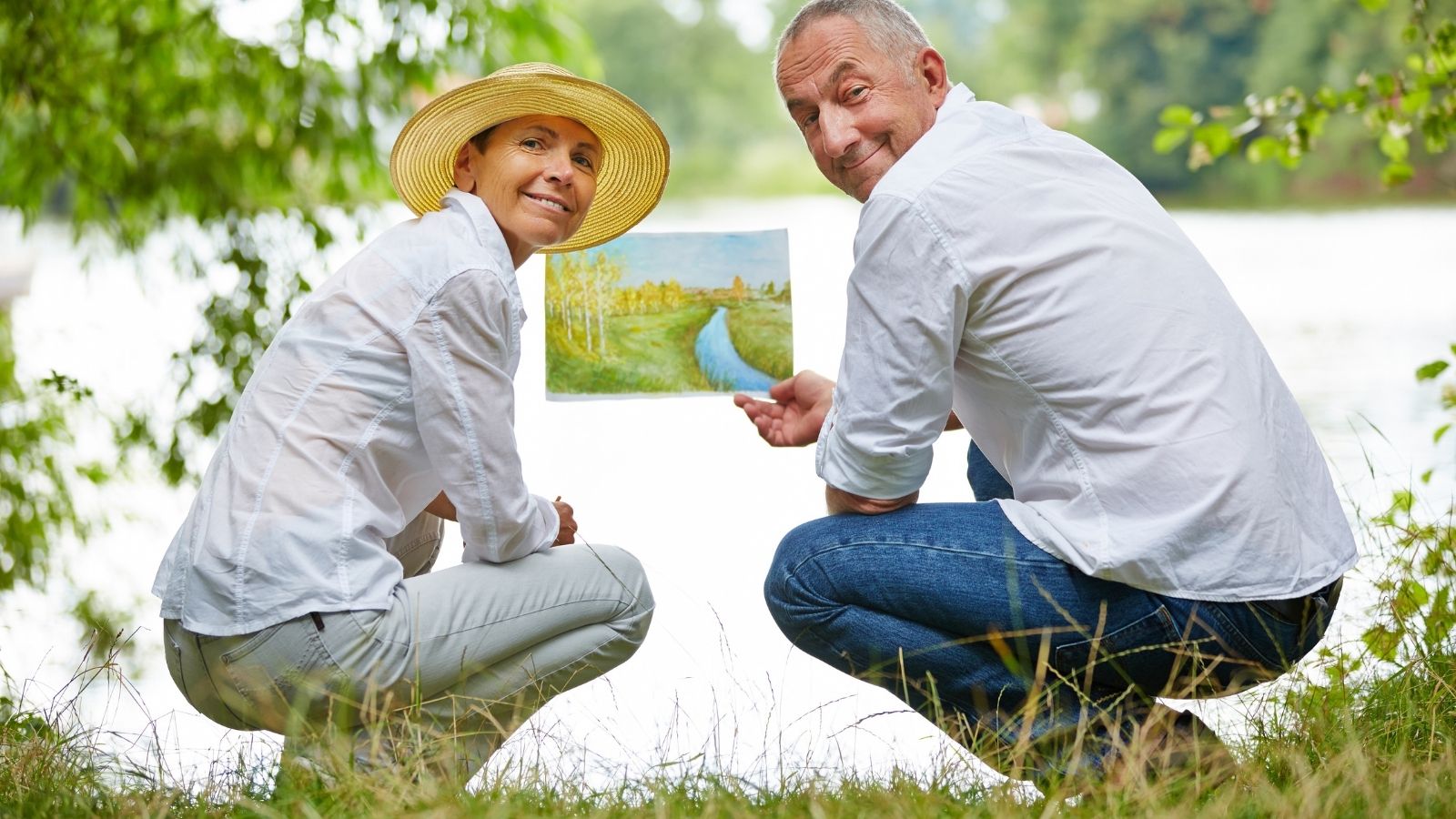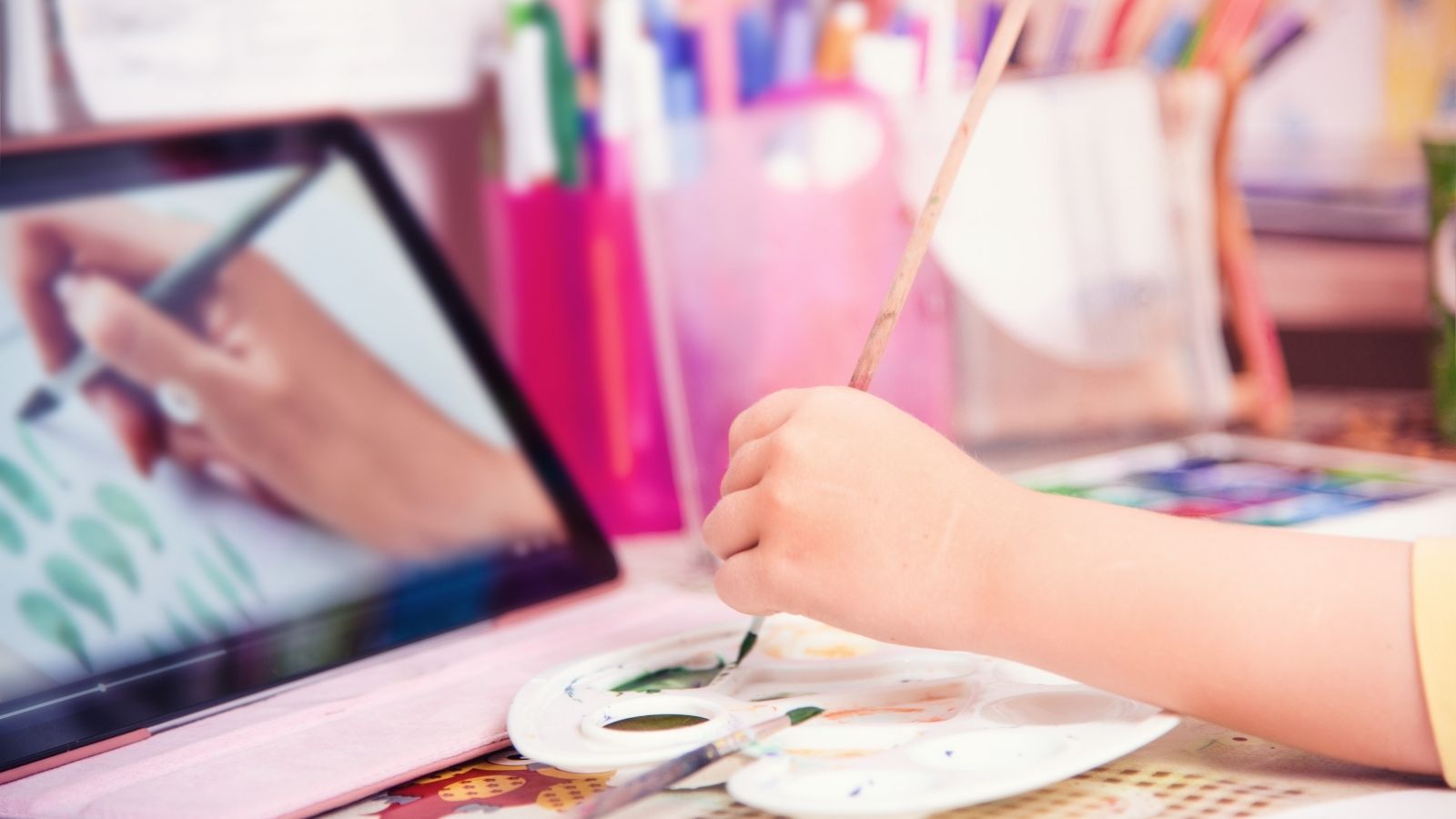Here is a general guide for beginners who want to know how to learn to paint from scratch. We have divided the guide into a few simple steps, and you can follow these easy steps. So, let's get this started.
Why Painting?
Firstly, you should consider why you want to embrace painting. How you proceed and what you should concentrate on learning will be determined by your responses. Don't think there's just one learning path that everyone has to follow to master painting. We all have different tendencies, interests, and natural abilities that determine the best way to learn.
Maybe you are not interested in entering the world of commercial art but just want a fulfilling hobby. In this case, you may want to adopt a more relaxed approach to learning.
Or you might want to become an advanced experimental painter. To achieve this goal, you need to follow a specialized and strict training system. It should focus on painting and other basic aspects like color, value, composition, etc.
Fundamentals
We strongly suggest practical learning, not just spending time on it. If you don't know what you are doing, you can practice for many years with little improvement.
The basic principles of art are value, color, composition, margins, brushwork, edges, and technique. These are the core pillars of the painting.
You must become familiar with them early on. It will help you understand what happens when the brush touches the canvas.
If you're thinking about what to begin, here are some cool things to paint.
Supplies
Now it's time to buy supplies. However, before you start buying each type of brush or each color of paint, make sure you read all of this section first; you don't need that much!
- An easel to hold canvas or art paper.
- Canvas for acrylic/oil paints and art paper for watercolor.
- A color-mixing palette.
- Palette knives of different sizes.
- Brushes of different sizes and style tips.
- Paints according to your choice.
- Solvent for oil painting.
- Paper napkins for cleaning your brush.
You can find all of this at your local paint shops. If you're an absolute beginner, it's worth starting with a beginner's pack, which has most of the necessary materials you'll need. You can get the expert’s tools later.
Colors
When it comes to colors, I suggest starting with a limited palette that includes primary colors - red, blue, yellow. It should also have white and brown like burnt sienna/raw umber. Here's a sound starting palette.
- Cadmium red.
- Burnt umber.
- Titanium white.
- Cadmium yellow light.
- Ultramarine blue.
- Phthalo Green.
Medium
Then you should choose the medium you want to focus on. It will allow you to learn how each element works. You should pay more attention to these aspects of the painting, such as color, composition, value, etc. The main choices are oil, acrylic, and watercolor.
But there is no correct answer here. Each medium has its own advantages and disadvantages. Here, we give you an insight into various media to help you determine which is right for you.
Acrylics
People who are new to painting widely like acrylics because they are easy to use and do not require any unique supplies. The disadvantage is that they dry quickly.
Pros
- You can use them even if you are a complete beginner. You do not have to worry about oil painting and watercolors' complexity.
- The process of cleaning up is simple and easy.
- You need a limited budget.
- You can experiment with different factors.
- You can try these if you are sensitive or allergic to harmful chemicals correlated with oil painting.
Cons
- The color dries quite fast.
- You only have a limited amount of time to paint.
- Some colors get dark/shadowy when dry. Lighter colors usually have a more significant change.
For beginners, acrylics can develop a deeper understanding of painting.
Oils
Oil paints are the most used medium among expert painters for various reasons.
Pros
- Oil paints are very suitable and easy to use.
- They are quite adaptive.
- You can use paint thinner and add additional oil to change the paint's drying time and consistency significantly.
- It allows you to accomplish a wide range of painting techniques, including mixing, glazing and gluing.
- Expert painters use this medium mostly.
- It seems that oil paintings are valued more by collectors than acrylic paintings. However, there are exceptions.
- The classical painting methods used by the experts are suitable for oil painting.
Cons
- Slow drying can be a disadvantage.
- Due to the slow drying, it isn't easy to enter the next stage of painting.
- It is time-consuming.
- Sometimes colors accidentally get mixed, which are not meant to blend.
Watercolors
Due to the natural properties of water, watercolors are usually considered the most challenging to use.
Pros
- Watercolor painting can produce breathtaking and elegant paintings.
Cons
- Watercolor is generally considered the most challenging because its nature is not controlled.
- You cannot make any corrections to errors.
- Paper can absorb a lot of water.
Therefore, I suggest you try acrylic or oil first and then watercolor. However, watercolor painting is an excellent complement to acrylic or oil painting because it can train different skills.
Start Painting
Now you can start creating your first painting. Just a warning, it will be more challenging than it looks. An expert can make it look effortless, but you shouldn’t get disheartened. They have been painting for many years.
The main suggestion for your first painting is to start mediocre. Try to understand the topic first. Consider the theme in terms of shape and color.
You can then optimize the painting and add more details later.
Tips
Even if your first batch of works did not go as planned, be proud. You'll be looking back one day and will see how far you've come. Also, don't compare your paintings with the work of other artists.
Conclusion
In the first part of the tutorial, I asked you to think about why you want to paint and what you want to get out of it. If you haven't already, I encourage you to think for a moment and then proceed accordingly.



